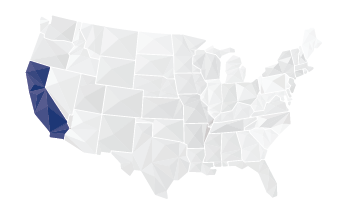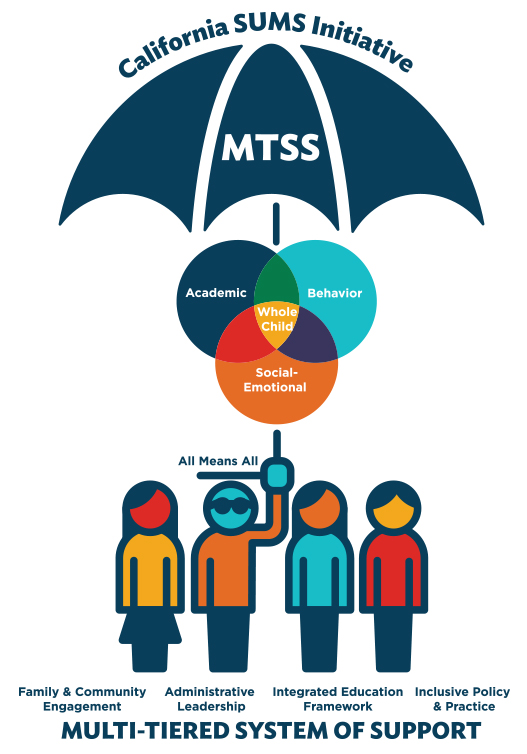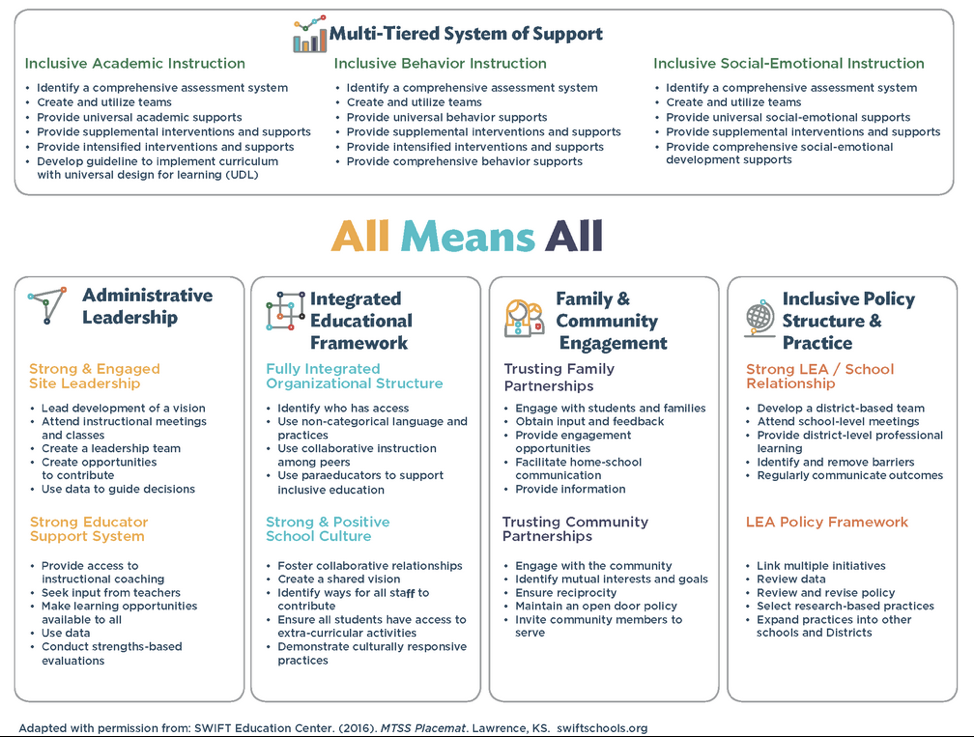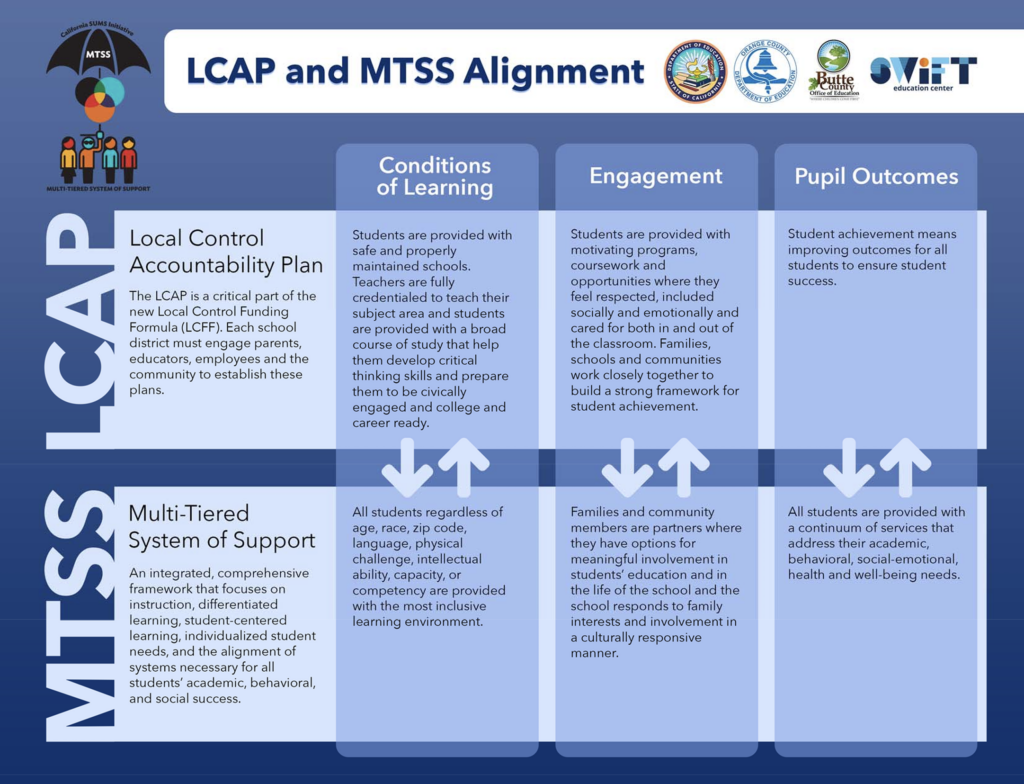Snapshot of What’s Working: Multi-Tiered System of Support

Few large-scale policy initiatives speak to the potential of the Local Control Funding Formula (LCFF) more so than the California Scale-Up Multi-Tiered System of Support (MTSS) Statewide Initiative—simply referred to as California MTSS.

California Scale-Up Multi-Tiered System of Support Statewide Initiative
Administered through the Orange County Department of Education (OCDE), California MTSS is a statewide initiative that aims to implement and scale a comprehensive MTSS framework throughout California. The California MTSS framework “aligns academic, behavioral, and social-emotional learning in a fully integrated system of support for the benefit of all students.” California MTSS complements and supports the goals of LCFF and associated Local Control Accountability Plans (LCAPs) in several ways, including promoting equitable practices, focusing on the whole child, and fostering coherence within districts and across schools. As will be described below, the tight alignment between LCFF/LCAP and California MTSS provides a unique opportunity for districts and schools to enhance the coherence of their policies, programs, and services.

California MTSS
California MTSS is designed to help districts and schools realign their current services under a comprehensive MTSS umbrella (see Figure 1). MTSS comprises three tiers of support: (1) universal supports designed to improve academic, behavioral, and social-emotional outcomes for all students; (2) supplemental supports for students who need additional support, and (3) intensified supports for students with the greatest needs. (See the MTSS websites from Orange County Department of Education and the California Department of Education for more detailed descriptions of the MTSS theory of change, tiers of support, and access to other resources).

Within California MTSS, OCDE staff and their partners at the SWIFT Education Center, the Butte County Office of Education, and Inflexion use a professional learning network model to provide districts with technical assistance, tools, and resources. This bundle of support helps district administrators catalog their current portfolio of academic, behavioral, and social-emotional services into the three MTSS tiers. From there, districts build assessment systems; create teams of educators to collect and analyze data specific to each domain; and develop and provide universal, supplemental, and intensive supports for students. Importantly, California MTSS has an explicit framework for districts to create and implement equitable services for students.
Promoting equitable practices. Promoting equity is at the heart of California MTSS, which employs the maxim “ALL Means ALL.”
California MTSS “prioritizes inclusive practices to increase access to high-quality education and resources for all students. It aims to re-engage marginalized students, reduce disproportionality of discipline referrals for minority and Special Education students, and address the unique needs of underserved populations such as children living in poverty, foster youth, juvenile justice involved youth, charter school students, and rural schools.”
California MTSS employs two leading frameworks designed to promote equity: Universal Design for Learning (UDL) and Culturally Responsive Teaching (CRT). UDL promotes inclusive learning environments where students are provided with the necessary supports, resources, and instruction to meet their individual needs, and is considered the cornerstone of the professional learning curriculum provided to districts through California MTSS. Closely related, CRT embodies the idea that students should be able to see themselves in the standards, assessments, and classroom activities that form their learning environment, as well as be taught by teachers who acknowledge, respect, and build on students’ existing cultural knowledge and expertise. When combined with MTSS, these two frameworks help ensure that each student is seen as a whole child with a unique set of experiences, knowledge, and needs.

Focusing on the whole child. The holistic approach aligns with California’s push to expand definitions of student success beyond numeracy and literacy proficiency. Typical prevention/ intervention programs and frameworks prioritize traditional academic and behavioral outcomes, but in the early stages of development, leaders of California MTSS determined that students’ social-emotional well-being required an explicit third domain in addition to academics and behavior. Furthermore, the inclusion of the social-emotional domain in the California MTSS framework aligns with efforts to measure an expanded set of student outcomes in California’s state and local school accountability systems. At the state level, district quality is evaluated using multiple indicators that extend beyond academic outcomes. At the local level, LCAPs require districts to address some set of other pupil outcomes in addition to standard student achievement in literacy and numeracy.
Fostering coherence. Perhaps the most important area of alignment between California MTSS and LCFF/LCAP is a focus on improving organizational coherence within districts and schools. For example, MTSS is not meant to be a standalone initiative. Rather, MTSS acts as a unifying framework for organizing all the things districts and schools already do and then identifying what’s working and what gaps in services exist. Districts and schools are then provided technical support and tasked with establishing systems to improve students’ academic, behavioral, and social-emotional skills and outcomes through a tiered system of support that relies on data to diagnose student needs and equitable practices to ensure ALL really means ALL.
Alignment of the California MTSS Initiative and LCFF/ LCAP. Similar to LCFF/LCAP (and unlike many standalone initiatives), California MTSS has the potential to bring together several different district and school services to support students academically, behaviorally, and social-emotionally. In fact, an explicit goal in OCDE’s strategic plan for California MTSS is to provide technical assistance and training to help districts use their LCAPs as a tool for identifying and organizing the services provided within their MTSS frameworks.
LCAPs are comprehensive strategic plans created annually by every school district in California. Under LCFF, districts are required to state explicit LCAP goals that address eight state priorities categorized under three domains: (a) provide adequate conditions for learning, (b) enhance stakeholder engagement, and (c) improve student outcomes. As the image above shows, both LCFF/LCAP and California MTSS focus on these three domains. Through this tight alignment, LCFF/LCAPs “provide the infrastructure for building a statewide system of support” and California’s MTSS framework serves as “the driver for implementation.” Put differently, the organization of LCAPs allows districts to improve the coherency of their services by assigning purpose to previously standalone organizational structures, policies, and programs (e.g., Positive Behavior Intervention and Supports, First Best Instruction) within the California MTSS framework. An example from one district follows.
An Example from the Field
A review of San Diego Unified School District’s (SDUSD) 2018–19 LCAP exhibits how the district is using its newly created Integrated Multi-Tiered System of Support (I-MTSS) framework to organize several of its services. The I-MTSS framework is designed so “practices, policies, and programs are aligned on classroom, school, and district levels.”
Below are just a few examples from SDUSD’s LCAP that demonstrate its alignment to the California MTSS framework.
SDUSD’s I-MTSS framework
- employs a set of “backbone” experiences, tied to a digital badging system, in the areas of college, career, and life readiness in which all students participate.
- uses the district’s Early Warning System for academic and behavioral outcomes and parent input to determine whether students will receive Tier 2 and/or Tier 3 MTSS interventions. (All students receive Tier 1 support.)
- guides implementation of comprehensive school counseling programs. These programs facilitate practices that address the intersections of academic, behavioral, and social-emotional learning and needs as well as postsecondary skills.
- informed the revision of the district’s Uniform Discipline Plan.
- encapsulates both the Response to Instruction and Intervention (RTI2) and Positive Behavior Intervention and Supports (PBIS) frameworks.
- outlines Children and Youth in Transition (e.g., homeless, foster, military family, and refugee children and youth) professional development and training for teachers, counselors, and other practitioners.
As indicated by this list of selected examples, SDUSD is using its LCAP to take explicit, transparent steps to align several of its current academic, behavioral, and social-emotional services within its I-MTSS framework. Additionally, the work and plans described in SDUSD’s 2018–19 LCAP build on plans laid and executed in its 2017–18 LCAP.
This model of continuous improvement and incremental implementation is precisely the type of organizational coherence that the LCFF/LCAP is meant to generate.
Across the State
Rolling into its third year, California MTSS has already affected more than 58 county offices of education and 600 districts across the state and is poised to influence many more. When explicitly aligned to LCFF/LCAP, initiatives such as California MTSS have the potential to promote equitable practices, focus on the whole child, and enhance organizational coherence—three areas critical for pursuing continuous improvement and effective local control in California.
As the example from SDUSD demonstrates, California MTSS can act as a unifying framework within LCAPs for ascribing purpose to and coordinating existing district services. The example from SDUSD also shows that districts already have many of the services in place necessary for promoting academic, behavioral, and social-emotional growth. LCFF/ LCAP, coupled with the California MTSS framework, provides a means for districts to organize, show, and improve the effectiveness of the support provided to each and every student, as well as identify and address gaps.
View & download this report here: California MTSS Snapshot PDF
Tools for LCAP and MTSS Development
Click the links below to start saving yourself time and get stuff done.
Guide to Understanding CA MTSS
This guide explains the mission of MTSS and its structural components, its alignment to LCAP/LCFF, and how districts can implement it effectively. The guide includes several graphics that may help districts communicate MTSS to various stakeholders. Through a study of low performing schools, the Reform Support Network identified five key components of successful community engagement for school turnaround. For each component, the report describes different approaches schools have taken.
California MTSS Training Series
The Orange County Department of Education developed this training series for district leaders. It explains the purpose and functioning of MTSS, provides guidance for data-based conversations, reviews tools available to districts, trains leaders to establish strong teaming and coaching structures, and offers self-assessments.
Including College and Career Readiness Within a Multitiered Systems of Support Framework
The authors of this journal article assert that college and career readiness (CCR) approaches must include both existing strategies and new data-driven efforts within multitiered systems of support (MTSS) and recommend ways to strengthen and embed CCR within MTSS.
Authors: Mary E. Morningstar, Allison Lombardi, David Test











Responses